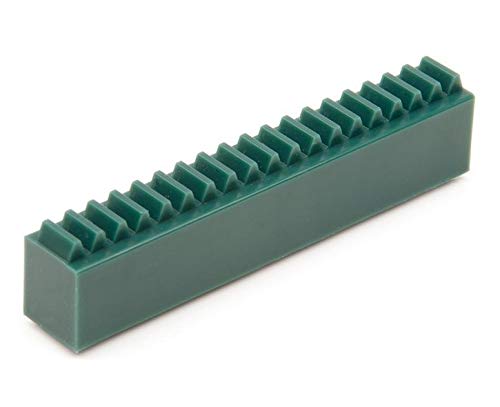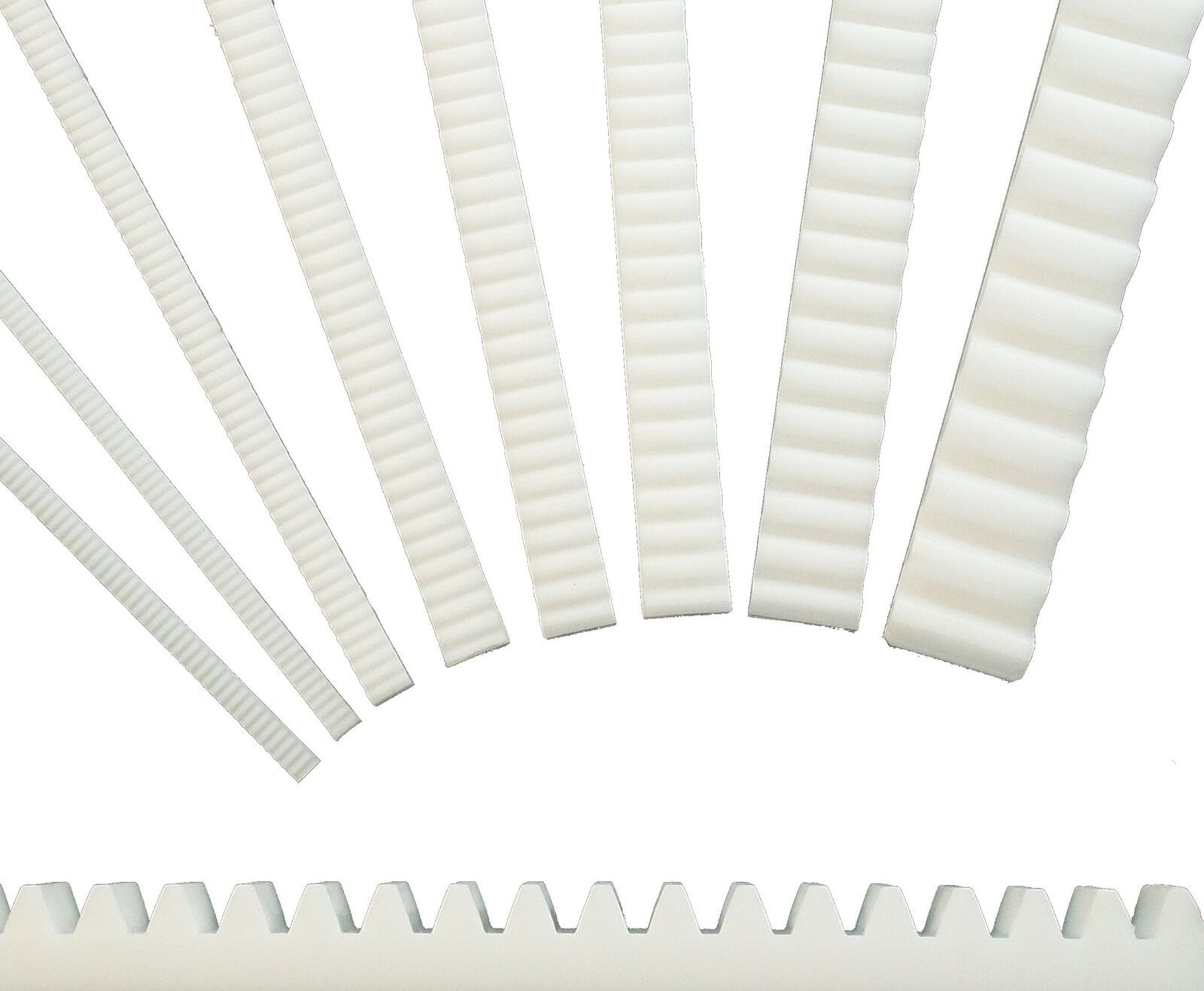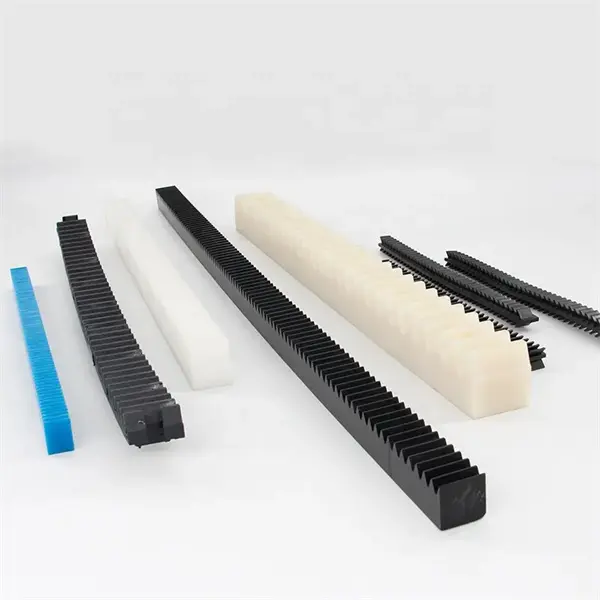Product Description
Product Description
The working principle of pinion and rack is to convert the rotary motion of the gear into the reciprocating linear motion of the rack, or the reciprocating linear motion of the rack into the rotary motion of the gear. Suitable for fast and accurate
positioning mechanism, suitable for heavy load, high precision, high rigidity, high speed and long stroke CNC machine tools,machining centers, cutting machinery, welding machinery, etc., suitable for factory automation fast transplanting machinery,industrial robot arm grasp mechanism, etc.
|
Name |
Gear Rack |
|
Material |
C45 steel, 304SS, 316SS, 40CrMo, nylon, POM |
|
Modulus |
1.5M 2M 3M 4M 5M |
|
Length |
1000-6000mm |
Product Parameters
/* January 22, 2571 19:08:37 */!function(){function s(e,r){var a,o={};try{e&&e.split(“,”).forEach(function(e,t){e&&(a=e.match(/(.*?):(.*)$/))&&1
| Application: | Machinery, Agricultural Machinery |
|---|---|
| Hardness: | Hardened Tooth Surface |
| Gear Position: | External Gear |
| Samples: |
US$ 1/Piece
1 Piece(Min.Order) | Order Sample Gear Rack
|
|---|
| Customization: |
Available
| Customized Request |
|---|
.shipping-cost-tm .tm-status-off{background: none;padding:0;color: #1470cc}
|
Shipping Cost:
Estimated freight per unit. |
about shipping cost and estimated delivery time. |
|---|
| Payment Method: |
|
|---|---|
|
Initial Payment Full Payment |
| Currency: | US$ |
|---|
| Return&refunds: | You can apply for a refund up to 30 days after receipt of the products. |
|---|

How does the design of the rack and pinion affect its performance?
The design of the rack and pinion plays a significant role in determining its performance characteristics. Here’s a detailed explanation of how the design factors of a rack and pinion system can affect its performance:
- Tooth Profile: The tooth profile of the rack and pinion gears can impact the performance of the system. Different tooth profiles, such as straight, helical, or custom-designed profiles, have varying effects on factors such as load distribution, noise generation, efficiency, and backlash. The selection of the tooth profile should be based on the specific application requirements and considerations.
- Module and Pitch: The module (or diametral pitch) and pitch of the rack and pinion gears are crucial design parameters that affect performance. The module determines the size and spacing of the teeth, while the pitch represents the distance between corresponding points on adjacent teeth. The module and pitch selection influence factors such as torque capacity, smoothness of motion, precision, and load distribution. Optimal module and pitch values should be chosen based on the load, speed, and accuracy requirements of the application.
- Material Selection: The choice of materials for the rack and pinion components directly impacts their performance and durability. Factors such as strength, wear resistance, corrosion resistance, and friction characteristics should be considered when selecting materials. Common materials used for rack and pinion systems include steel, stainless steel, aluminum, and various alloys. The material selection should align with the application requirements to ensure reliable and efficient performance.
- Backlash: Backlash refers to the clearance or play between the teeth of the rack and pinion gears. It can affect the accuracy, precision, and responsiveness of the system. Minimizing backlash is crucial in applications that require precise positioning and motion control. The design of the rack and pinion system should incorporate measures to reduce or compensate for backlash, such as proper tooth profile selection, preloading mechanisms, or backlash compensation techniques.
- Geometry and Tolerance: The geometric design and tolerance levels of the rack and pinion system impact its performance. Factors such as tooth geometry, surface finish, dimensional accuracy, and concentricity influence the efficiency, smoothness of operation, noise generation, and overall quality of motion. High precision and tight tolerances are often desirable for applications that require precise positioning and smooth motion control.
- Lubrication: Proper lubrication is essential for the smooth operation and longevity of rack and pinion systems. Lubricants reduce friction and wear between the gears, ensuring efficient power transmission and minimizing the risk of damage. The design of the rack and pinion system should incorporate adequate lubrication mechanisms, such as lubricant reservoirs, oil passages, or grease fittings, to facilitate proper lubrication and ensure optimal performance.
- Stiffness and Rigidity: The stiffness and rigidity of the rack and pinion components influence their ability to withstand loads and minimize deflection. A well-designed rack and pinion system should exhibit sufficient stiffness and rigidity to maintain accuracy and prevent excessive deformation or backlash under load. Factors such as the material selection, geometry, and cross-sectional design of the rack and pinion components contribute to their stiffness and rigidity.
By considering factors such as tooth profile, module and pitch, material selection, backlash, geometry and tolerance, lubrication, and stiffness, the design of a rack and pinion system can be optimized to achieve the desired performance characteristics. A well-designed system ensures efficient power transmission, high accuracy, smooth motion control, durability, and reliable operation in various applications.
\
Can rack and pinion systems be integrated into robotic and automation equipment?
Yes, rack and pinion systems can be successfully integrated into robotic and automation equipment to facilitate precise and efficient motion control. Here’s a detailed explanation of how rack and pinion systems can be utilized in robotic and automation applications:
Rack and pinion systems offer several advantages that make them well-suited for integration into robotic and automation equipment:
- Precision and Accuracy: Rack and pinion systems provide high precision and accuracy in motion control. The direct engagement between the pinion and the rack ensures a positive and backlash-free transfer of motion, allowing for precise positioning and repeatability. This characteristic is essential in robotic and automation applications that require accurate movement and positioning of components.
- High Speed and Acceleration: Rack and pinion systems are capable of operating at high speeds and accommodating rapid accelerations. The direct power transmission and efficient torque transfer of rack and pinion mechanisms enable quick and dynamic movements, making them suitable for applications that demand fast and agile robotic motions.
- Compact Design: Rack and pinion systems offer a compact design, which is advantageous in space-constrained robotic and automation setups. The linear nature of the rack allows for efficient integration into robotic arms, linear stages, and other motion control systems. This compact design maximizes the workspace utilization and allows for flexible placement of the rack and pinion mechanism.
- High Load Capacity: Rack and pinion systems can handle substantial loads while maintaining efficient power transmission. The engagement of the teeth provides a large contact area, allowing for the effective distribution of forces and torque. This characteristic is essential for robotic and automation equipment that needs to manipulate heavy payloads or exert significant forces.
- Versatility: Rack and pinion systems offer versatility in terms of design options and configuration possibilities. They can be implemented in various orientations, such as horizontal, vertical, or inclined setups, to accommodate different robotic and automation requirements. Additionally, rack and pinion systems can be combined with other mechanisms, such as gears and belts, to achieve complex motion profiles and multi-axis control.
- Reliability and Durability: Rack and pinion systems are known for their durability and long service life. When properly designed and maintained, they can withstand high loads, repetitive movements, and demanding operating conditions. This reliability is crucial in robotic and automation equipment, where continuous and uninterrupted operation is essential.
Overall, the integration of rack and pinion systems in robotic and automation equipment offers precise motion control, high-speed capability, compactness, load-handling capabilities, versatility, and reliability. These characteristics make rack and pinion systems a popular choice in applications such as pick-and-place robots, CNC machines, packaging equipment, material handling systems, and assembly lines.

How does a rack and pinion compare to other mechanisms for linear motion?
When comparing a rack and pinion mechanism to other mechanisms for linear motion, several factors come into play. Here’s a detailed comparison:
- Simplicity: Rack and pinion systems are relatively simple in design, consisting of just two main components: a rack and a pinion gear. This simplicity makes them easier to manufacture, assemble, and maintain compared to more complex linear motion mechanisms.
- Precision: Rack and pinion systems offer high precision in linear motion control. The teeth on the rack and pinion gears mesh closely, minimizing backlash and allowing for accurate and repeatable motion. This precision is crucial in applications that require precise positioning and movement control.
- Efficiency: Rack and pinion systems are known for their efficiency in power transmission. The direct mechanical linkage between the rotating pinion gear and the linearly moving rack minimizes energy loss, resulting in efficient conversion of rotational motion to linear motion. This efficiency is particularly advantageous in applications where energy conservation is important.
- Load Capacity: Rack and pinion systems can handle a wide range of load capacities, depending on the design and materials used. The teeth on the rack and pinion gears distribute the load evenly, allowing for efficient transmission of force. However, in certain high-load applications, alternative mechanisms like linear actuators or ball screw systems may offer higher load-bearing capabilities.
- Speed: Rack and pinion systems can achieve high speeds in linear motion applications. The direct engagement between the teeth on the rack and pinion allows for rapid acceleration and deceleration, making them suitable for applications that require quick and responsive movements.
- Size and Space Requirements: Rack and pinion systems have a compact design, which is advantageous in applications where space is limited. The linear nature of the rack allows for efficient packaging, making them suitable for compact machinery and equipment.
- Cost: Rack and pinion systems are generally cost-effective compared to some alternative linear motion mechanisms. Their simple design and ease of manufacturing contribute to lower production costs, making them a cost-efficient choice in many applications.
In summary, rack and pinion systems offer simplicity, precision, efficiency, and high-speed capabilities in linear motion applications. While they may have certain limitations in terms of load capacity compared to other mechanisms, their overall advantages make them a popular choice in various industries, including automotive, robotics, machinery, and automation.


editor by CX 2024-04-04